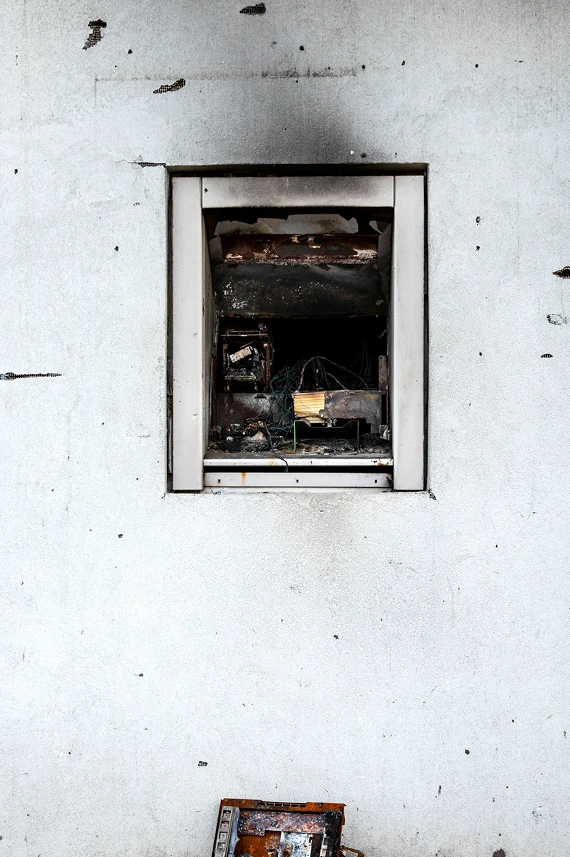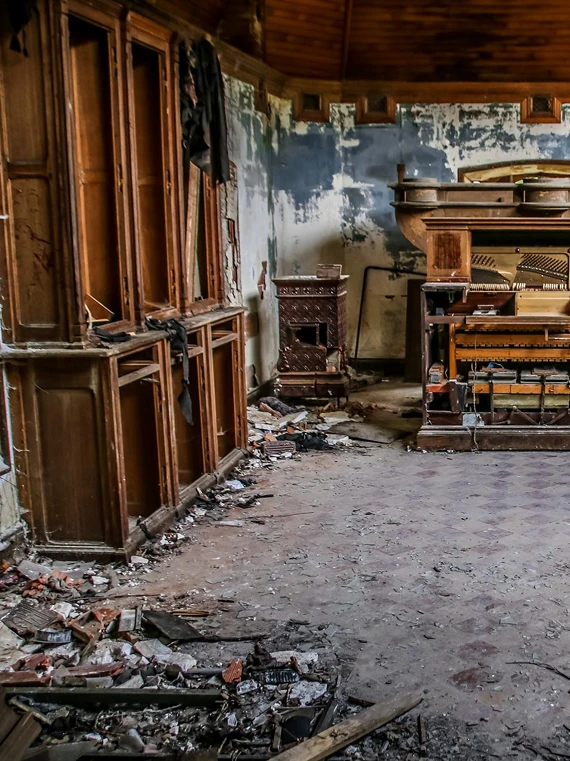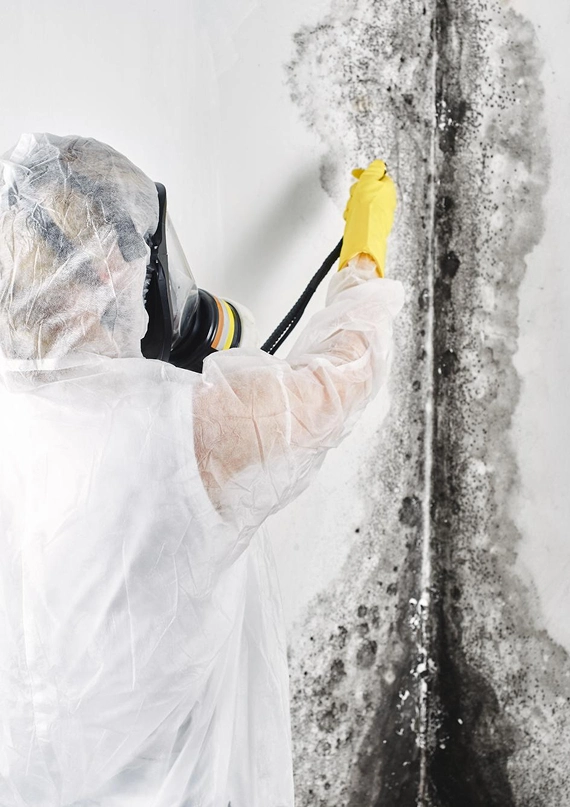House Fire: First Steps to Take
The first moments after a house fire are often filled with stress and confusion, but your priority should always be the safety of yourself and your family. Fires can spread quickly and leave behind hidden dangers, which is why acting calmly and carefully is essential.
Begin by making sure everyone is out of the home and accounted for. Once outside, do not attempt to go back inside to retrieve belongings, as the structure may not be safe. Your immediate focus should be on protecting lives, not property.
You should also take the following steps right away:
- Ensure everyone is safe and accounted for by meeting at a designated spot outside the home or quickly establishing one once you are out.
- Call emergency services as soon as possible, even if the fire looks like it is under control. Firefighters can address hidden flames, smoke hazards, and structural risks.
- Do not re-enter the home until the fire department confirms it is safe. Even small fires can weaken walls, floors, or ceilings.
- Secure a temporary shelter if your home is uninhabitable. This may mean staying with family, friends, or reaching out to local disaster relief organizations such as the Red Cross.
Taking these immediate steps ensures that everyone is protected while laying the groundwork for the recovery process.

Contact Your Insurance Agent
Once everyone is safe and the fire has been extinguished, the next critical step is to notify your insurance agent. Acting quickly helps start the claims process without unnecessary delays, ensuring you receive the support you need to begin repairs and replacements. Your agent will guide you through the steps required to document the loss and prepare your claim.
Before making any changes to your property, take time to carefully record the condition of your home. Photos and videos serve as valuable evidence for your claim and provide proof of the extent of the damage. Avoid discarding anything that was affected by the fire until an adjuster has had the chance to inspect it. Even items that seem beyond repair can strengthen your case when filing for reimbursement.
Here are the most important steps to take when contacting your insurance agent:
- Notify your insurance agent right away to begin the claims process as soon as possible.
- Document the damage with photos and videos before cleanup or repairs begin.
- Avoid throwing away damaged items until the insurance adjuster has assessed them and confirmed they can be removed.
Taking these actions promptly ensures your claim is properly supported and helps you move forward with the financial resources necessary to recover.
Fire Damage and Safety Concerns
Even after the flames are extinguished, a fire-damaged home can still pose serious risks. Structural weaknesses, hidden embers, and lingering smoke can make the environment dangerous. It is important to recognize these hazards and take precautions to keep yourself and your family safe.
One of the most common issues is structural instability. Floors, walls, and ceilings may have been weakened by heat or water used to put out the fire. In addition, smoke inhalation can continue to be a health risk long after the fire is out. Water damage from firefighting efforts may also create the perfect conditions for mold and mildew growth if not addressed quickly.
For your safety, always wait for clearance from professionals before going back inside. Firefighters or inspectors will let you know when it is safe to re-enter and retrieve belongings. Entering too soon could put you at risk of injury or exposure to harmful conditions.
Key points to remember include:
- Understand common post-fire hazards such as structural instability, smoke inhalation risks, and water damage.
- Wait for professionals to declare your home safe to enter before attempting to go inside.
By respecting these safety precautions, you protect yourself and allow experts to properly assess and secure the home.

Fire Damage Cleanup
Once it is safe to re-enter your home, the cleanup process can begin. Fire damage cleanup is not just about clearing debris. It also involves addressing soot, smoke, and water damage, all of which can spread and worsen if not handled properly. Acting quickly helps prevent additional harm to your home and belongings.
The best approach is to hire certified fire damage restoration specialists. These professionals have the tools and training to safely clean, disinfect, and restore fire-damaged spaces. They can also identify hidden damage that homeowners might overlook. If you decide to handle small tasks on your own, take proper precautions to avoid health and safety risks.
Important steps for fire damage cleanup include:
- Hire certified fire damage restoration specialists who can manage the process safely and thoroughly.
- Remove debris, soot, and smoke odor carefully to prevent further contamination and lingering smells.
- Use protective gear if handling minor cleanup yourself, including gloves, masks, and goggles to protect from harmful particles.
Thorough cleanup not only makes your home safer but also lays the foundation for the restoration process that follows.
Restoration Process
After initial cleanup, the focus shifts to restoring your home so it can be safe and livable again. The restoration process goes beyond surface cleaning. It involves securing the property, repairing damage, and ensuring that hidden problems caused by fire, smoke, or water do not linger. Professional restoration services are strongly recommended since they have the experience and equipment to handle each stage effectively.
A typical step-by-step restoration process may include:
- Securing the property by boarding up windows and tarping damaged roofs to prevent weather exposure or unauthorized entry.
- Water extraction and drying to address damage caused by firefighting efforts and prevent mold or mildew growth.
- Smoke and soot removal from walls, ceilings, furniture, and air ducts to eliminate odors and reduce long-term health risks.
- Structural repairs to restore stability, which may include replacing drywall, repairing flooring, or rebuilding sections of the home.
Each of these steps is essential to bringing the property back to a safe and functional condition. By following this process, homeowners can begin to reclaim their space and move forward toward normalcy.

Remove Mildew and Secondary Damage
After a fire, many homeowners focus only on visible damage caused by flames and smoke, but water damage from firefighting efforts can create additional problems. When left untreated, standing water and damp materials provide the perfect environment for mold and mildew to grow. These issues not only damage your property further but can also pose serious health risks for you and your family.
Acting quickly to remove moisture is essential. Drying out your home reduces the risk of long-term structural damage and improves indoor air quality. While minor dampness can sometimes be managed with fans and ventilation, larger water issues often require professional intervention.
Key steps to prevent secondary damage include:
- Recognize that fires often leave water damage from firefighting efforts, which can be just as harmful as smoke or soot.
- Address standing water quickly to prevent mold and mildew from spreading throughout your home.
- Consider professional drying and dehumidification services to ensure hidden moisture is fully removed from walls, floors, and air ducts.
By addressing water-related damage immediately, you protect your home from costly repairs and create a healthier environment during the restoration process.
Salvaging Valuables and Important Documents
Savings Bonds and Financial Papers
Financial records are among the most important items to secure after a fire. Savings bonds, checks, and other financial papers may be essential for managing your recovery and ensuring access to funds. Even if these documents appear damaged, they may still be recoverable or usable for replacement requests.
If possible, carefully gather any savings bonds, bank records, or investment papers you can safely reach. Store them in a clean, dry container to prevent further damage. For items that cannot be salvaged, contact the issuing institutions as soon as possible. Many banks, government offices, and financial agencies have procedures for replacing fire-damaged or destroyed documents.
Key steps include:
- Retrieve and safeguard savings bonds, checks, and financial documents as soon as it is safe to do so.
- Contact financial institutions for replacements if items are destroyed, providing proof of loss when required.
By acting quickly, you reduce the risk of financial setbacks and ensure that important records are either preserved or replaced without delay.
Important Documents
Beyond financial papers, personal and legal documents are also critical to your recovery after a house fire. Birth certificates, identification cards, property titles, and insurance policies are often required when filing claims, proving ownership, or applying for assistance. Losing these documents can create significant delays in the recovery process, so protecting or replacing them should be a top priority.
If you can recover important paperwork, place it in a safe and secure location. Going forward, consider storing these items in fireproof and waterproof containers to protect them from future emergencies. If documents are destroyed, contact the appropriate agencies, such as the vital records office, the Department of Motor Vehicles, or your insurance provider, to request certified replacements.
Key actions include:
- Protect or replace birth certificates, IDs, property titles, and insurance policies to maintain access to essential services and legal rights.
- Store recovered documents in waterproof containers going forward to safeguard them against future damage.
Taking these steps ensures that you have the necessary records to move forward with insurance claims, financial recovery, and legal requirements.
Home Freezer and Food Safety
Food safety is a major concern after a house fire. Even if food looks untouched, smoke, heat, and loss of power can make it unsafe to eat. Perishable items stored in the refrigerator or freezer may spoil quickly if electricity is cut off for more than a few hours. In addition, smoke and chemicals from the fire can contaminate packaging, making food dangerous for consumption.
It is better to be cautious when deciding what to keep and what to discard. Consuming contaminated or spoiled food can cause serious health problems, so prioritize safety over trying to salvage groceries.
Keep these guidelines in mind:
- Discard perishable food exposed to fire, smoke, or a lack of refrigeration, as it may be unsafe, even if it looks normal.
- When in doubt, throw it out to avoid health risks and ensure your family’s safety.
By eliminating questionable food, you reduce the risk of illness and create a clean slate for restocking once your home is safe again.
Re-Enter Your Home Safely
Returning to your home after a fire can be an emotional moment, but it is important to put safety first. Even if the flames are out, the structure may still be unstable, and smoke or soot particles can linger in the air. Entering too soon without proper precautions can put you at risk of injury or illness.
Always wait for clearance from firefighters, inspectors, or restoration professionals before going back inside. Once they confirm the home is safe to enter, take protective measures to limit exposure to harmful substances. Wear sturdy shoes, gloves, and a mask to protect against sharp debris, soot, and hazardous air quality.
When inside, keep your time limited and focus only on retrieving essential items. The goal is to recover what you need without putting yourself in unnecessary danger. Leave larger recovery efforts to trained professionals who have the right equipment to work safely.
Important safety steps include:
- Only return once professionals confirm it is structurally safe and there are no immediate hazards.
- Wear protective clothing and masks to reduce exposure to debris, chemicals, and airborne particles.
- Prioritize the retrieval of essentials while limiting time inside to minimize health and safety risks.
Following these precautions ensures that you can gather necessary belongings without compromising your well-being.
Recovering from a house fire can feel overwhelming, but it is possible with the right steps and support. Focus first on safety, then work with your insurance agent to start the claims process, follow through with cleanup, and move into restoration. Professional restoration teams and insurance representatives can guide you through each stage, easing the burden and helping you avoid costly mistakes. With careful planning and the right help, you can restore your home and begin moving forward with confidence.
Get Help with Your Fire Damage Claim
At Excel Adjusters, we advocate for you from the moment fire damage occurs through the final stages of repair. Our licensed public adjusters uncover hidden issues, handle all documentation, and work to secure the full settlement you deserve, not just what the insurance company offers.
If your home has been damaged by fire, call a public adjuster immediately for a consultation to protect your rights and start the recovery process with confidence.


